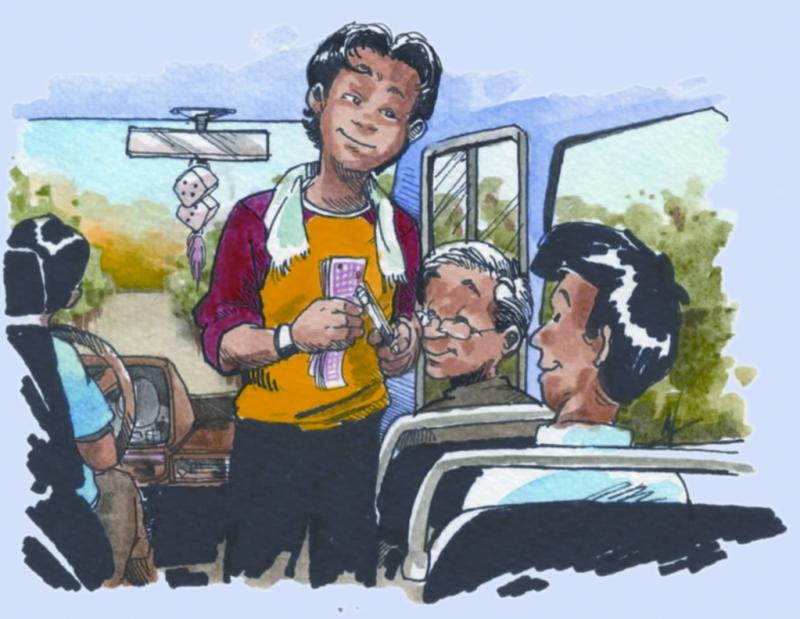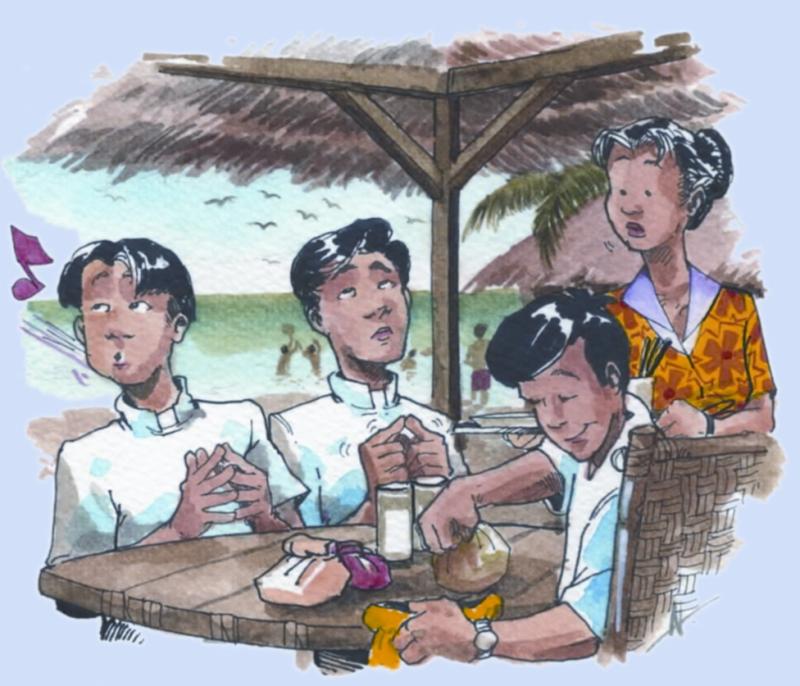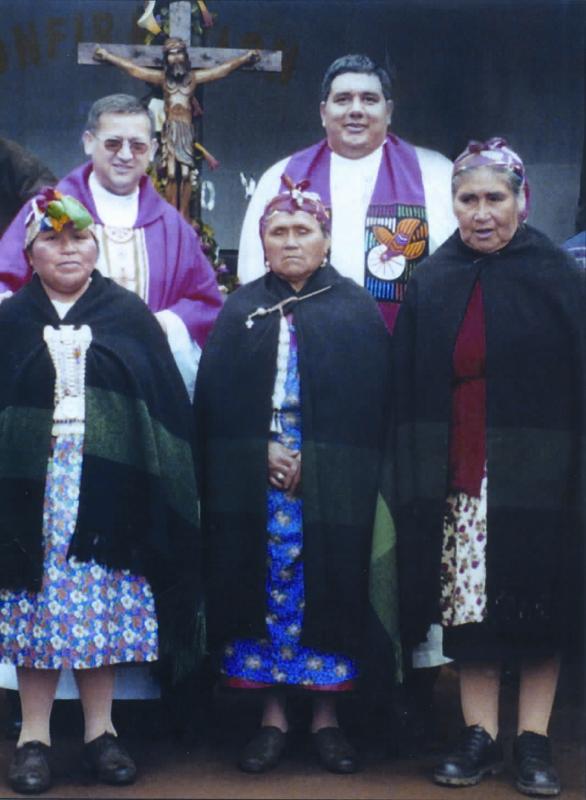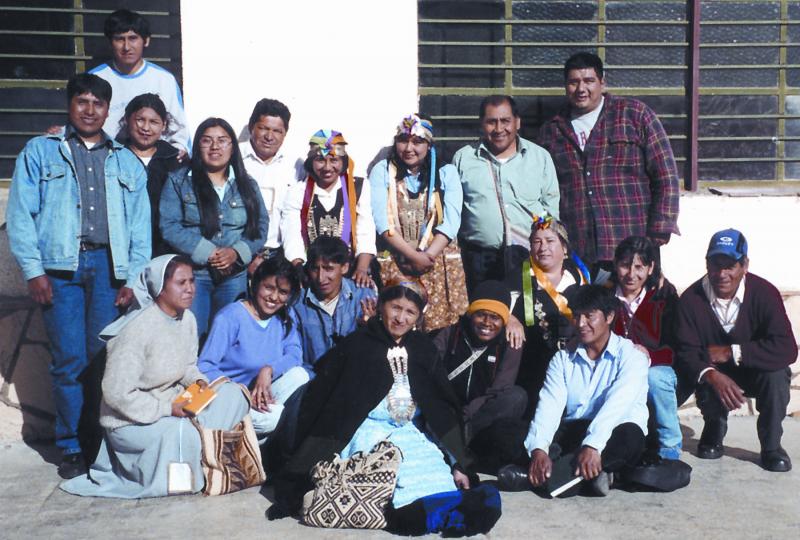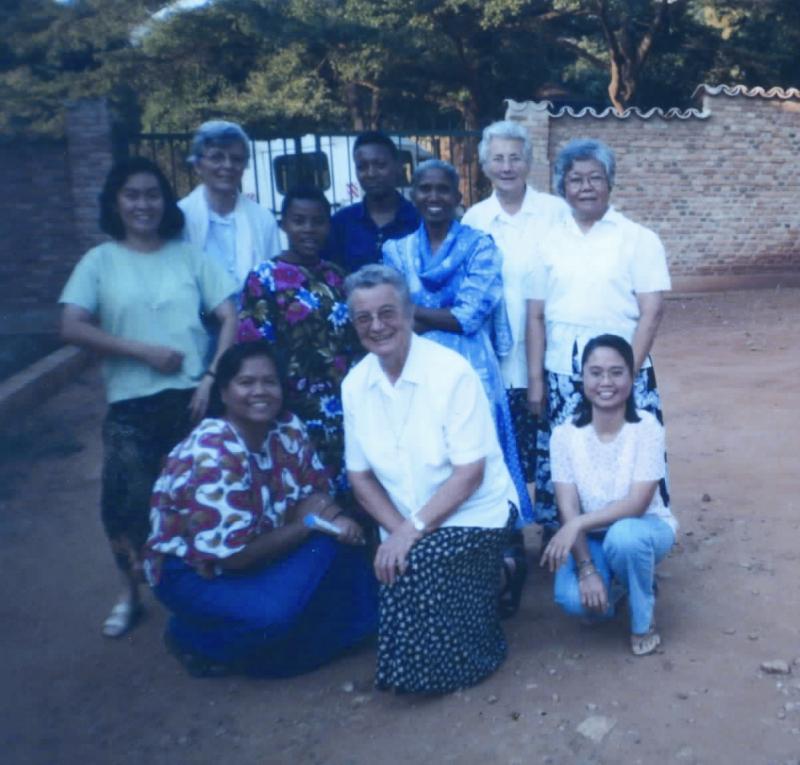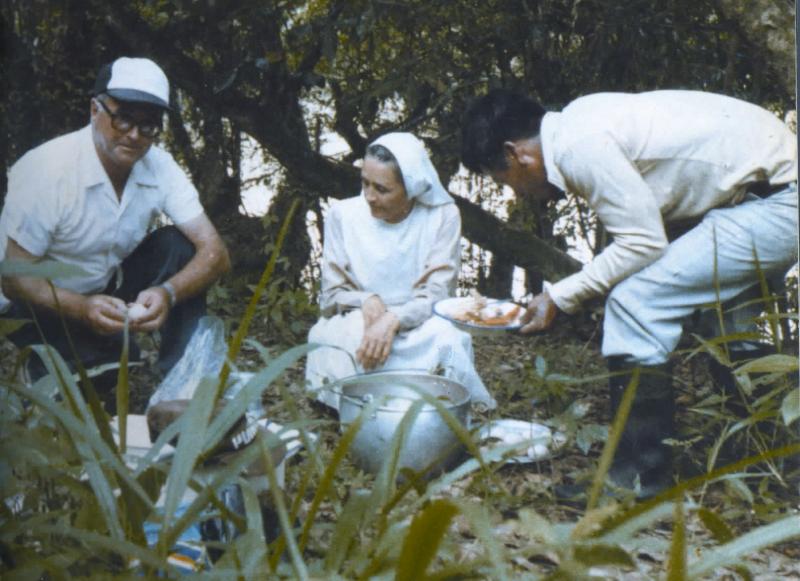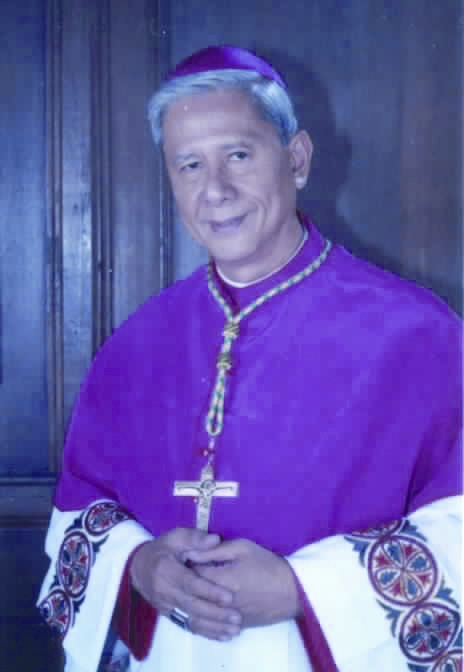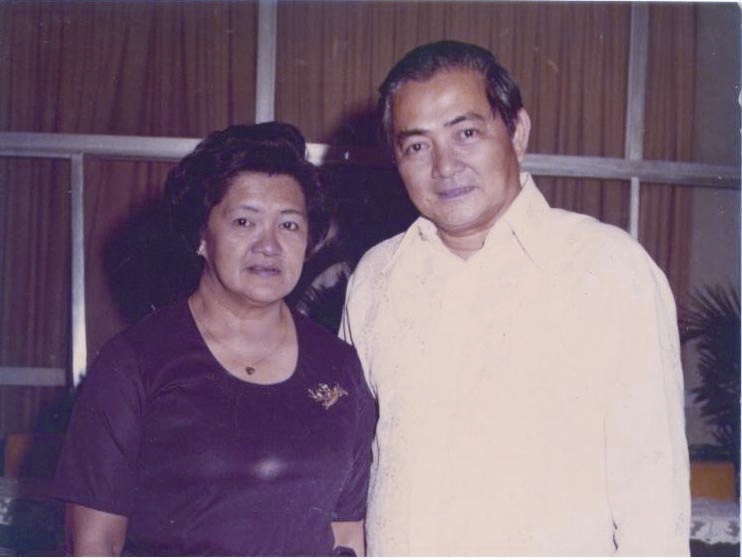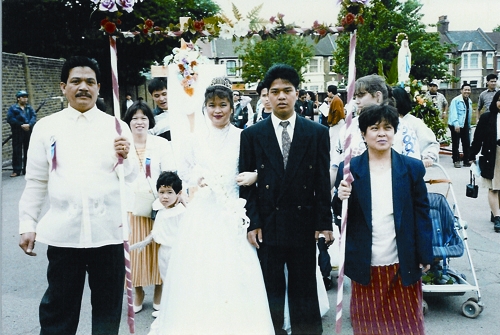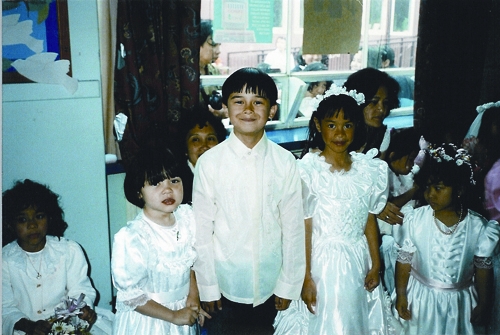May-June 2005
Father Joeker
HOLY OIL
After the first Saturday Mass at Christ the King Seminary,Quezon City, an old woman asked me for a blessing. While she bowed her head, I took from her the plastic container that looked like a holy water bottle and started sprinkling. But nothing came out except for a drop on her hand. To my surprise, it was oil, not holy water. Whew, what a disaster had I sprinkled oil all over her white dress!
JUNIOR CITIZEN
I took the Dagupan bus going to Manila. The conductor asked the old man sitting
in front of me, ‘Saan po?’ ‘Tarlac, Senior Citizen,’the old man replied.
The conductor then turned to me and asked, ‘Kayo po?’ ‘Manila, Junior Citizen,’
I answered, stressing ‘junior’. Smiling, he said in Ilocano, ‘Adayo pa,’
‘You’ve a long way to go yet!’No discount for me?
SPECIAL BORACAY LUNCH
My two priest companions and I stopped at one of the eateries in Boracay beach. I asked for a plate, a spoon and a fork. As the waitress brought them, my two companions looked at me suspiciously. Not minding them, I brought out our leftovers from lunch and feasted on it. They refused to join me even ifI was doing perfect recycling in the name of Justice and Peace and Integrity of Creation Ministry.
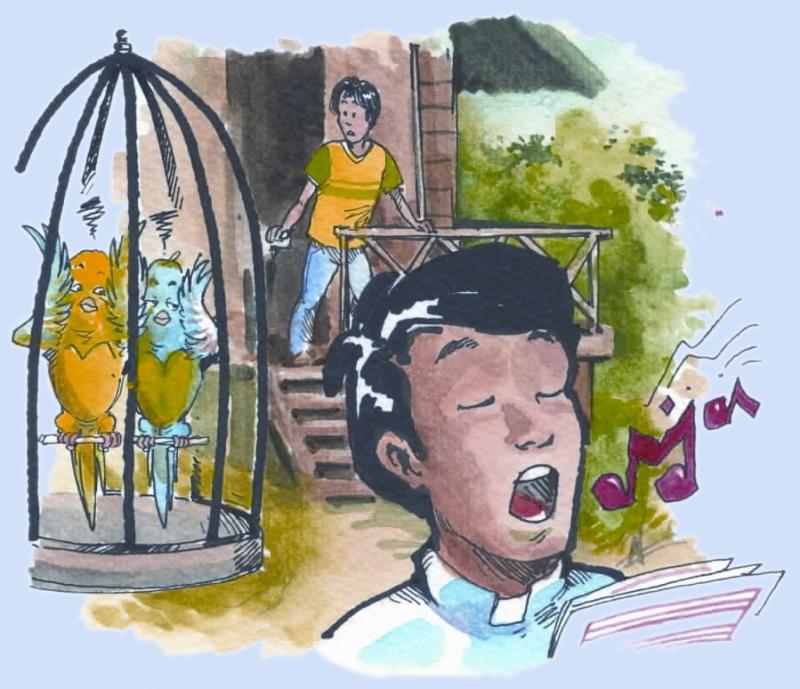
LOVE BIRDS
I accompanied Stephen, a seminarian, to his hometown in Lezo, Aklan. The day was hot so I decided to go outside their house and practice songs for Holy Saturday. I didn’t notice that there were lovebirds in a cage beside me. Stephen came out and asked me what happened to their love birds. They stopped chirping. I said,‘Stephen, I believe they’re mesmerized by my angelic voice.’
Fostering Bonds Of Unity
By Sr Ditma Luz Trocio MIC
A missionary from Baroy, Lanao del Norte, Sr Ditma Luz Trocio is well aware of the plight of migrant workers, particularly that of 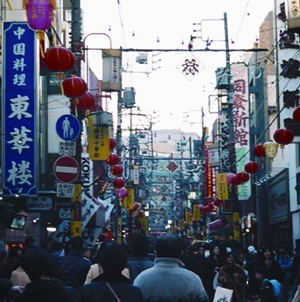
It is a well-known fact. Since about 1990, Taiwan has become one of the favored destinations of a large number of job seekers and capital investors from all over the world. This country’s economic miracle and financial prowess have thus attracted multicultural groups, who as a whole, form a complex society. Workers from Thailand, presently the most numerous, the Philippines, Malaysia, Indonesia, Singapore, India, from African countries and some from the West, have flocked to Taiwan as Overseas Contract Workers (OCWs). Forced by circumstances to work as domestics, migrant workers are hired for specific jobs and are expected to leave Taiwan at the end of a two-year contract. This policy seeks to avoid keeping undesirable migrants in the country as much as it is meant to prevent abusive practices by employers. Issues of injustice, of human rights violations, sex exploitation and other social problems have sprung up. On the other hand some ‘quiet’ churches have become alive because of the presence of Catholic migrant workers who flock to them every Sunday. Some domestic workers who are professionals and deeply committed to their faith have, by their Christian witnessing and sharing of the basic tenets of the faith, influenced the families they work for.
Promoting solidarity

The plight of workers, both foreign and local, is a major concern that the Church in Taiwan today tries to address. These people, especially the OCWs, are the modern poor of Yahweh, marginalized and oppressed members of materialistic society. Individuals who are moved and touched by the situation of these people have volunteered to serve them as chaplains or pastoral carers. The volunteers are mostly religious priests and Sisters from different congregations. Among them are some hired social workers and lay missionaries. For instance, the Church in Taiwan has invited a missionary from Indonesia, Thailand, a Buddhist monk and two Filipino social workers, to help migrant workers who usually do not speak Mandarin nor the local dialect.
In Taiwan, the Church is attentive to this multicultural and multi-faith society without neglecting her mission among the local people. Inserted in the pastoral projects of this Christian community, the MIC Sisters, while helping migrant workers to integrate into local society and its environment, also help the people of Taiwan to receive foreigners into their land with hospitality and gratitude for the contribution they bring. Obliged to come to Taiwan to earn their livelihood, migrant workers bring a valuable contribution to the high degree of economic progress in the country.
Encounter and service
My participation in our mission in Taiwan is both simple and complicated, but challenging and rewarding. As associate chaplain of the Young Christian Workers (YCW) at the Holy Family Church Unit in Taipei, I am privileged to share the pain and struggle of the local laborers and, during our regular meetings on Sunday evenings, when we share our commitment on our faith journey, get to know about the many problems they face. Sometimes, when we have socials, I invite non-Chinese-speaking Filipinos to join us and meet the YCW Chinese group. This encounter favors mutual understanding and the integration of the immigrants into Taiwanese society. As for the members of the Legion of Mary at St Christopher's Church, I help them realize how important it is to understand their rights and claim it and assume their responsibilities with Christian dignity.
I am also involved in the ministry for migrant workers at St Christopher’s Church. I help out in various ways: English and Mandarin classes, pastoral counseling to individuals and families, consultation services for a migrant’s quarterly review and contextualized Bible classes in view of fostering the newcomers’ adaptation and integration into their milieu. As part of journeying with the Legionaries of Mary in their faith and Christian commitment, I occasionally accompany them in their visits to the sick, orphans and prisoners of different nationalities.
Welcoming the stranger
The presence of the Catholic migrant workers enlivens parish life. Churches which have been closed for several years are becoming meeting places. At all the Sunday Masses, St Christopher’s Church is filled to overflowing with Filipino Catholics who actively participate in the liturgy with so much life and vibrant singing. The Church is like a beehive at weekends. There are always meetings of several Church organizations and activities. Often, some of the fervent Catholics stay after Mass with their friends. Sports-fests and cultural activities, theater, folk music, concerts and processions, such as a Santacruzan in May and an Ati-Atihan in January, are organized. Last year, the concert, which in previous years was free, was used to raise funds to meet parish needs. But the audience didn’t mind the small charge because of the great joy they reaped from listening to beautiful and familiar music. This was an opportune time to share the joy of Christmas and also to discover and recognize the varied talents of migrant workers.
Cultural integration is a continuous process that involves newcomers and the local people. Before the overseas contract workers depart from the Philippines for Taiwan, they are given a two-week orientation seminar, a brief introduction to Mandarin and a list of chaplains or pastoral carers whom they may contact according to their needs, particularly while they are undergoing the initial stages in their process of integration. The service of mediation and moral support are important to facilitate the migrant workers’ adaptation to their new community of belonging. For a missionary like myself, being this in-between person – a link between the Taiwanese people and the overseas contract workers – is at the same time an experience of giving and of receiving, a challenge where I experience the Spirit of Jesus in the words, the projects and the deep hopes that unite us.
Healing The Sins Of Evangelization
By Fr Chris Saenz SSC
Father Saenz, a Columban from Omaha, Nebraska, USA, was ordained in 2000. He had part of his formation in the Philippines.We are now observing the Year of the Eucharist. His article shows how a debate over the role of the Eucharist helps heal wounds caused by ‘the sword and the cross’ in Chile and Argentina.
Ever since childhood I was always taught that the sacraments, especially the Eucharist, were the cornerstone of our Catholic faith. During my training as a priest, it was reinforced that the Eucharist is the center of our faith, the most sacred Catholic celebration. Jesus Christ’s body, broken and shared, brings healing to his people.
The confession of sins and their absolution by a priest is a sign of this healing. Furthermore, the priest, before receiving the body and blood of Christ, must recognize his own weakness and offer it up to God as a sign of the wounded healer. The Eucharist gives such power to heal that those who are denied it feel the pain of not partaking in this most-valued sacrament.
But what if the Eucharist can be a symbol of imposition and oppression for a people? What if the celebration of the Eucharist opens old wounds instead of healing them? I face these powerful questions as a missionary priest, and they challenge my core beliefs.
Working with ‘The People of the Earth’
Since March 2001 I’ve been working with the Mapuches, the indigenous people of Chile. The word mapuche means ‘people of the Earth.’ I work in southern Chile particularly with the Mapuche tribe known as lafkenche, ‘people of the coast’. Certainly, the native people’s pain caused by evangelization through the ‘sword and the cross’ and their cry for justice are much older wounds than the misery caused by the military dictatorships of the past century.
But here in the Chilean region of Araucanía, those evangelization efforts, which happened just over 100 years ago, are still fresh in the minds of people. Some Mapuches still can remember denying their culture and accepting Christianity in order to survive. For a Christian missionary, it can be uncomfortable supporting a people to whom we owe an historical debt.
Recently, I’ve worked with the Diocesan Commission of Indigenous Ministry, which is comprised of Mapuche and non-Mapuche pastoral agents (priests, deacons, religious and laity) interested in dialogue and preservation of the Mapuche culture. I was invited to an organizational meeting for the annual seminar on the Mapuche religion to be held in Argentina in November 2004. Our commission and two other ministries – one each from Chile and Argentina – offer support to the Mapuches from Argentina and Chile who organize the seminar.
Non-Mapuches attending the four-day seminar are pastoral agents who work with the Mapuches to reinforce their endangered culture by preserving the Mapuche’s traditional language, religiosity, education, medicine, sports and social structures.
The meeting is an excellent opportunity for younger Mapuches to listen and learn about their culture from elders. For non-Mapuches, it is an opportunity to listen and observe. Even though most Mapuches attending are Catholics, the Eucharist is not celebrated during the seminar.
Sacraments as subjugation
This fact came up during the organizational meeting. When the Mapuches involved presented the proposed program to Bishop Marcelino Palentini SCI of Jujuy, Argentina, near the Chilean border, he asked, ‘Why can’t the Eucharist be included in the seminar?’ The bishop had attended the seminar for years, but never said a word about the lack of a Eucharistic celebration. He often left the seminar to celebrate the Eucharist in private, but he thought this was celebrating the Eucharist secretly. ‘Why should the Eucharist be celebrated secretly when it is the center of our faith?’ he asked.
Silence came over the room. A Mapuche woman eventually spoke. She told the bishop that many Mapuches attending would look upon a Eucharistic celebration as the Church trying to manipulate the seminar and enforce its sacraments, like it had done in Chile’s history. Another Mapuche said the seminar was a place to celebrate their spirituality and that their rogativas (prayer sessions) held each morning were just as sacred as the Eucharist. Another said non-Catholics might be offended by the sacrament.
The bishop listened to their concerns, but insisted that the Eucharist is essential and can be used as a point of dialogue.
Other Mapuches spoke up. They said that although Bishop Palentini had been more open and accepting of them, many of their experiences with bishops and priests had been negative. Many, they said, don’t ask for dialogue or show a willingness to learn their culture. Eventually, a non-Mapuche priest said it was not the Catholics’ place to include the Eucharist in the program; the Mapuches must decide.
When the bishop heard this, he was very apologetic. He asked for forgiveness for any hurt feelings he might have caused. The people accepted the apology and stated that the conversation was fruitful, because the bishop gave the Mapuches the time and the confidence to express their feelings.
A Mapuche coordinator then said, ‘Maybe it’s time to heal this old wound.’ He suggested that free time could be worked into the program so that those attending would have a couple of hours to do as they pleased. Even though there would be no mention of Eucharist or sacraments, those who were Catholics could freely celebrate the Eucharist. This time would allow others of different religions to celebrate their faiths as well. All agreed to this suggestion.
Time to listen
As a Catholic missionary priest, I’m often invited to question my beliefs in the light of another culture and its history. This can be uncomfortable. The Eucharist is a fundamental tenet of our faith, but I know it can be a source of pain for others. Listening to stories about this pain can heal these wounds.
When the Mapuches talk about the pain of Christianity in their history, it is not a time to walk out. It’s a time to be quiet and listen. Only in this way can this old wound begin to heal.
ICM Presence Remains In Burundi
By Sister Agnes Minerva ICM and Sister Josephine ICM
Sr Josephine serves in the Diocese of Bujumbura, Burundi, as nurse. Sr Agnes Minerva shares life with children with mental disabilities. They belong to the Missionary Sisters of the Immaculate Heart of Mary, the ICM Sisters, popularly known in the Philippines before as ‘the Belgian Sisters.’ The background to this story is the war that began after the assassination of President Melchior Ndadaye in an attempted military coup on 21 October 1993. Ten years of war led to 300,000 deaths, according to the British Broadcasting Corporation (BBC). The estimated population in 2004 was around 6, 200,00, but its difficutlt to get accurate figures.
The sky was clear as we reached Munanira, which my co-sisters had spoken about so often. It was indeed a beautiful place. I felt so much at home that I said to myself, ‘I’m in Bauko, MountainProvince.’ We were at the former ICM convent, in a place where the people of Burundi have known much suffering during the last ten years or so. We went straight to the chapel in the Sisters’ convent and thanked God for the gift of mission and asked pardon for the many times that as missionaries we hadn’t respected in one way or another, consciously and unconsciously, the ‘footprints of God’ in the land. I was grateful for this pilgrimage to Munanira, one of many places where we were celebrating 60 years of ICM presence in Burundi.
I started to go back to the past trying to imagine the life of our Sisters here when the war began. Words written in Kirundi, the main language of Burundi, on one of the convent walls caught my attention. ‘Ugasabikanya n’ubutmwa bw’umukristu wese . . .’ Sister Josephine explained that these meant ‘the mission of every Christian to share, to work with each another, each taking responsibility in mission work.’ She had lived, prayed, ate and slept in this house to serve the sick, and the babies and their mothers. I wondered how her life and apostolate had been; what were the hopes, fears and longings of the people during her time? Twenty-one years after first arriving in Munanira, how did she see it now? I couldn’t help but feel with her as she pondered the wonders of God’s re-creating love as she narrated her story.
+++++++++++++++
Sister Josephine’s Story
Revisiting my first African mission post has deeply touched me in many ways. I couldn’t help my tears flowing as we prayed -- tears of joy and gratitude for new life, new beginnings. To think that in 1993 all teachers and local government employees, except one, were beaten to death and buried in a common grave. When we arrived in mid-morning the people, including Muslims, had gathered close to the church for an inter-faith service. So many stories, beautiful, painful, life-giving experiences, that I could only be grateful. I recall the nights when neighbors came knocking on my window because someone was sick or a baby about to be born. No second thoughts as to whether it was safe to bring someone to the hospital 40 kilometers away after midnight even though Sr Marie Louise, as I recalled, reminded us more than once that she’d met wild deer on that trip. I remembered another elderly, ‘stone deaf’ Sister who’d remind us at recreation each time the plane of Sabena, Belgian Airlines, flew over our house. We had two hours of electricity, thanks to our generator, but no running water.
One day when I was alone, a young man came whose mouth and jaws had been torn apart by a bull. But he was so trusting that I could slowly but surely suture everything together. What a first experience! What about the man whose tooth was gone except for its roots? No way to convince him to see a dentist in the next province. Where would he get the bus-fare? And the sad parents of the one-eyed, new-born baby. And an old man gasping for breath, bleeding from the mouth. With forceps and much physical strength I removed a well-nourished leech from his throat. At 4pm every Friday we had prayer together with the staff, each in turn preparing the readings and songs.
Some memories made me smile. One day four men carrying an inderuzo, stretcher, arrived with a man whom they had gone to bury earlier but who had then started to move! One Easter morning a young man came after me saying, ‘Mama tuvuye mu Misa ibiri,’ ‘Sister, we had two Masses.’ The Easter vigil had lasted till the wee hours because of the many baptisms!
I recalled that at one of the regular Thursday mass-weddings, a bridegroom carefully took his portable kneeler out of his pocket. It was a bra! And Boniface, a Mutwa, another ethnic group, who fell in line with the rest of the sick for Holy Communion, thinking he would be treated for his illness.
Eight years before our visit we ICM Sisters had to leave Munanira because we were caught between warring groups and were isolated for weeks. However, full of hope, we left everything in the hands of the people themselves.
+++++++++++++
Hearing Sister Josephine’s stories, and seeing Munanira now, I really feel that there was so much to be proud of and to feel good about. The house is still intact, not a single piece of furniture out of place, nothing broken, according to Sr Josephine. The local congregation of Sisters there now are a concrete manifestation that the people had valued our presence. Most importantly, what we ICM Sisters started in the parish continues without us. Our presence remains in and with the parishioners and the local Sisters as they themselves carry on the responsibility, a very precious gift for us ICMs on this occasion of the DIAMOND JUBILEE of our presence in Burundi.
Ines Arango Velasquez: Passion For The Mission
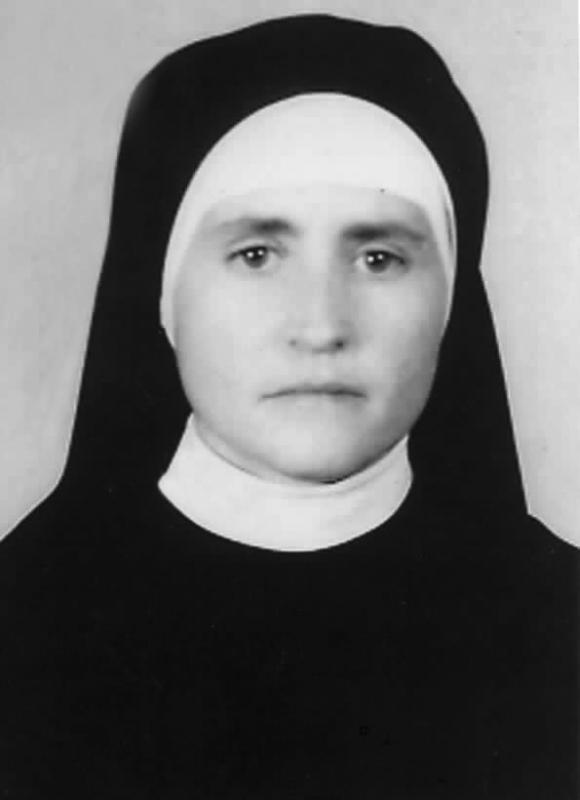
By Sister Adela Paternina TC
Sister Adela, from Colombia, came to the Philippines in March 1999. She celebrated her Golden Jubilee in Bacolod on 8 December 2003. She was a friend of Sister Ines.
Ines came into this world on 6 April 1937 in Medellín, Colombia, the eleventh of twelve children of Fabricano Arango and Magdalena Velasquez. She was baptized four days later, confirmed on 6 October 1940 and received her First Holy Communion in 1944. Like two of her sisters, Fabiola, the eldest, and Cecilia, she joined the Capuchin Tertiary Sisters. Another, Angela, left as a junior sister.
The three sisters were following relatives on both sides of their family. Their mother had two brothers who were Jesuits, one a missionary in China, another brother a Franciscan and a sister a Poor Clare. Their father had a sister in the Capuchin Tertiary Sisters and another a Conceptionist Franciscan Sister. The extended clan produced 90 religious and priests. Ines’ home was a model of Christian life, the family attending Mass in the early morning and praying the rosary in the evening.
WHAT WAS INES LIKE?
Ines’ character was like ‘fire,’ but she was innocent and pure. She loved her mother in a special way and was very obedient and serious. Yet she was very joyful and able to share this joy with others. She was simple and self-sacrificing, always ready to help others. She was very sincere but didn’t like being corrected, which is why she was considered a little stubborn.
After three years of high school Ines joined the Lauritas Missionary Sisters as an aspirant for two months. But God had other plans. On 17 October 1954, the centenary of the birth of Bishop Luis Amigó, founder of the Capuchin Tertiary Sisters, she felt in her heart, while attending the profession of her sister Cecilia, that Jesus wanted her to join that congregation. She immediately asked the superior of the San José province to be admitted. Her parents were present when she started her postulancy in Medellín at the age of 17.
Ines started her novitiate on 2 July 1955, changing her name to Sister Maria Nieves de Medellín. On 7 July 1956 she made her first Profession.
Though she looked fragile - Ines was 5-foot-2 and only 88 pounds - she was very healthy, full of energy and full of missionary ideals. She wanted to be a missionary from her adolescence but had to wait for 20 years before being sent to another country.
INES AS A TEACHER
After Ines’ profession the Provincial Superior assigned her to teach in the elementary school in Versalles in the departamento (province) of Valle de Cauca. She subsequently taught in several other places in Colombia. Her students loved Ines and considered her an excellent teacher. One of her students, now a Capuchin Tertiary Sister in Venezuela, called her ‘a giant soul in a small body.’Shealso considered that she learned more from the example of Sr Ines whose life was an ‘open book’ for her students.
INES A MISSIONARY
In January 1977 Ines was one of the founders when the San José Province of the Sisters in Colombia opened a missionary house in the Prefecture Apostolic of Aguarico in the Amazonas Jungle in Ecuador. When the new community later opened a hospital in Nuevo Rocafuerte, near the Peruvian border, Ines was made superior and here she was to spend nearly all of her time in Ecuador. This too was to be a time of great growth in her spiritual life, a time of greater intimacy in prayer, of greater sacrifice and of total generosity in serving the people.
MONSEÑOR ALEJANDRO
Bishop Alejandro Labaca Ugarte OFMCap, first bishop of Aguarico, did missionary work with a group of indigenous people called Huaorani or Aucas. He invited Sr Ines to join him in this work as he saw the presence of a woman as being very important. Ines started with the permission of her superiors in Medellín and spent several periods in the middle of the jungle, adjusting to the culture and food of the local people. She learned the language, one of the ways in which she showed her love for the people. She discovered that the Aucas, who don’t wear clothing, didn’t know how to use fire or how to travel by river. Little by little the people’s lot improved and their lives as citizens of Ecuador were transformed.
THE TAGAERI TRIBE
Monseñor Labaca also wanted to help the Tagaeri people, a branch of the Huaorani ethnic group, numbering less than a hundred. The Tagaeri have always refused to make contact with outsiders. Before his planned visit, the bishop had food, towels, knives and other utensils dropped by helicopter. When he thought that all was ready, he invited Sr Ines to go with him to visit the Tagaeris. The day before Sister Ines left, Sr Laura Fernandez asked her:
- Are you not afraid? What if they kill you?
- That’s not a problem. I’ll die happy.
- But Ines, is it true that you are not afraid?
- No, Laura, because if I die, I will die in the way and in the place that I begged from the Lord!
21 JULY 1987
Very early in the morning Bishop Alejandro and Sister Ines went to the place of the Tagaeri tribe. They descended from the helicopter by ‘crane.’ The aircraft then returned to base.
However, the Tagaeri didn’t accept the visitors, thinking they were a threat to their way of life. The Capuchins seemed to be aware of this possibility and the following day insisted that the helicopter go back again. The crew could see the bodies of the two missionaries but before retrieving them returned to base for some armed soldiers in case the Tagaeris would attack again. However, they had disappeared. The badly decomposed bodies showed that Monseñor Alejandro and Sister Ines had many wounds from spears about four meters long. The bodies were taken to Coca City and, after Mass and a procession, buried in the cathedral.
The Sisters found this message in the room of Ines:
In case of death:
If I die, I will die happy. I prefer no one will know anything about me, I don’t seek honor. God knows . . .
Always with all of you: INES.
The process for the beatification of Bishop Alejandro and Sister Ines as martyrs began two years ago.
Love Is A Decision
By Bishop Vicente M. Navarra, DD
Bishop Vicente M. Navarra, born in Mambusao, Capiz, became auxiliary bishop of Capiz in 1979. In 1988 he became first Bishop of Kabankalan and in 2001 fifth Bishop of Bacolod. This is a slightly edited version of the homily he gave on Pentecost Sunday, 2004, at a Mass for the Silver Jubilee of Worldwide Marriage Encounter (WME) in Bacolod.
Bishop Vicente M. Navarra, DD
Bishop of Bacolod
As we know, the first Pentecost was characterized by that extraordinary and external manifestation of the Holy Spirit, when this Divine Person of the Blessed Trinity descended in the form of tongues of fire and rested upon the heads of the Apostles gathered in prayer in the company of the Mother of God, the Blessed Virgin Mary.
It is said that when that Divine intervention happened nothing was ever the same again for the Apostles. From being fearful and timid, they became emboldened and courageous, determined and consistent in preaching Jesus and His Word, even to the shedding of their blood. And with their small group and their preaching the Church, the People of God, was born.
Twenty-five years ago, the Diocese of Bacolod witnessed a new Pentecost. It was the manifestation of the Spirit of God that made His presence and indwelling specifically felt by married couples who joined and experienced the live-in process of the first Worldwide Marriage Encounter weekend in the Diocese.

Marriage Encounter logo
Couples experienced a renewal, first in their individual persons, but mostly in their relationship as couples and as parents. They discovered a new dimension in their roles as spouses and parents; and they got a new perspective about their role as apostolic couple, couples who have acquired through baptism and confirmation and by the grace of their sacrament of marriage, the responsibility and mission to evangelize and to minister to other couples around them.
‘Live the memory and catch the Spirit,’ is the theme of the celebration of your Silver Anniversary. This is a resounding echo of St Paul’s exhortation to Timothy: ‘… I remind you to fan into flame the gift of God, which is in you…’ (2 Timothy 1:6)
I am happy and grateful for the testimonies you’ve been sharing. I pray that the Spirit of the Lord will continue to anoint those shared experiences, so that in turn a kind of urgency and momentum will be generated in you, the encountered couples, enabling you to render a steadfast, consistent, generous and joyful service to your own marriages and to all the other marriages around you.
For some time, in my former Archdiocese of Capiz, I was working with couples in another expression of marriage encounter apostolate and can never forget how one couple, Mr Nestor Diaz de Rivera and his wife, Dra Lucille Martilino Diaz de Rivera, greatly influenced my life and ministry as a bishop, especially on ‘The decision to love!’ They were from Manila but Doctora was the daughter of my Ninang when I was ordained bishop. We invited them several times to be couple-presenters in Marriage Encounter weekends in Capiz.
Lucille & Nestor
They were such a lovely, inspiring and edifying couple. Nestor was a CEO in a big business firm and Lucille a doctor of medicine. They had 11 children to raise and educate. And yet they really made time to get involved in ME weekends, as well as other apostolic works that ministered to couples and their families. But Lucille got sick of a rare disease that caused atrophy to that part of the brain that controls speech and movements of the body. It was indeed a big blow and everybody in the family suffered. She gradually lost her speech and, unable to move, had to be confined to bed, but hardly a word of complaint could be heard from her. What I admired most was the fidelity, the patience and the loving care of Nestor who practically stayed all the time beside her, spoon-feeding her and administering her many different medicines. What love and what devotion! And all because of the determined and courageous decision of the couple to be true and loyal and devoted to each other despite the seemingly insurmountable obstacles and trials. Both have since passed away. May the Lord rest their souls in peace.
This couple was a special gift of the Spirit of God to me, as a person and bishop, and to my pastoral ministry. Many times you have heard that a bishop is espoused to his Diocese – to the people in his diocese. With the Spirit of the Lord only one thing keeps me going – my decision to love my Lord enthroned, not on a golden throne, but hanging on the Cross. Yes, my decision to love Him in my people uttering sometimes in a faltering way my Episcopal motto ‘ADSUM’ – ‘HERE I AM!’
Let me call your attention to one particular point which greatly involves you and our Diocese as we engage in the proximate preparation for the opening of our Second Diocesan Synod on October 4, Luke 5:4: ‘Launch out into the deep.’ This is used by John Paul II in his clarion call to implement the program of renewal for the Third Millennium. It is the same clarion call that we adapt to our Synod as we work for the renewal of our Church and the transformation of society.
Last year during the Fourth World Meeting of Families in Manila, one of the speakers shared his reflections on these words. According to him, this invitation/command of the Lord can mean three inter-penetrating movements for families.
One is movement towards a deeper interiority. Movement of communion with the Triune God, Who dwells in us, in the world of the Christian family: communion with the Divine Persons by listening to the Word of God, by family and individual prayer, by the celebration of the sacraments, especially the Holy Eucharist. How serious are we in our prayer life? How do we encounter and commune with God, especially in the Mass, in the Communion we receive?
A second is movement towards fuller communion between your leaders among themselves, with each other, with your Bishop, with your pastors, a communion that is not only skin-deep, but at the gut level; a communion which disdains competition, and is ready engage in collaboration and wholesome dialogue with one another, and to obey ecclesiastical authority; communion that results in according love/charity primacy in thought and practice, and in the sharing of spiritual gifts and material possessions. How have you been along this line as encountered couples?
A third is movement towards a more dynamic mission with family members evangelizing each other, and families evangelizing other families with a new fervor. A broadening of the sense of mission so that it is a participation in the development of a family-friendly society. This participation will be realized through activities that are not only religious but cultural, economic and even political. What is being done by WME couples along this line?
I love to end this reflection with Psalm104:30 that prays: Come, O Holy Spirit, fill the hearts of your faithful and enkindle in them the fire of your love! Send forth your spirit, O Lord, and renew the face of the earth!
Happy Pentecost and a blissful celebration to you all!
Message For World Day Of Migrants And Refugees
An edited text of Pope John Paul II’s message
‘Pluralism That Goes Beyond Mere Tolerance and Reaches Sympathy’
Dear Brothers and Sisters,
1. I would like to consider migration from the perspective of integration.
Many people use this word to denote the need for immigrants to be truly incorporated in the host country, but neither the content of this concept nor its practice is easy to define.
In this Document, integration is not presented as an assimilation that leads migrants to suppress or to forget their own cultural identity. Rather, contact with others leads to discovering their ‘secret,’ to being open to them in order to welcome their valid aspects and thus contribute to knowing each one better. This is a lengthy process that aims to shape societies and cultures, making them more and more a reflection of the multifaceted gifts of God to human beings. In this process the migrant is intent on taking the necessary steps towards social inclusion, such as learning the national language and complying with the laws and requirements at work.
All I desire on this occasion is to go deeper with you into some implications of the intercultural dimension of integration.
2. No one is unaware of the identity conflict that often comes about in the meeting of persons of different cultures. Positive elements do exist in this. By introducing themselves into a new environment, immigrants often become more aware of who they are, especially when they miss the persons and values that are important to them.
In our society, characterized by the global phenomenon of migration, individuals must seek the proper balance between respect for their own identity and recognition of that of others. Indeed, it is necessary to recognize the legitimate plurality of cultures present in a country, in harmony with the preservation of law and order, on which depend social peace and the freedom of citizens.
Indeed, it is essential to exclude models that tend to transform those who are different into their own copy, and models of marginalization of immigrants, with attitudes that can even arrive at the choice of apartheid. The way to take is the path of genuine integration with an open outlook that refuses to consider solely the differences between immigrants and the local people.
3. Thus the need arose for a dialogue between people of different cultures in a context of pluralism that goes beyond mere tolerance and reaches sympathy. A simple juxtaposition of groups of migrants and locals tends to encourage a reciprocal closure between cultures, or the establishment, among them, of relations that are merely superficial or tolerant. We should encourage instead a knowledge and openness between cultures, in a context of true understanding and benevolence.
Christians, conscious of the transcendent action of the Spirit, can also recognize in the various cultures the presence of ‘precious elements of religion and humanity’ that can offer solid prospects of mutual understanding. It will be necessary to combine the principle of respect for cultural differences with the protection of values that are in common and inalienable, because they are founded on universal human rights. This gives rise to ‘civic reasonableness’ that permits friendly and serene coexistence.
Moreover, Christians cannot give up proclaiming the Gospel of Christ to all creation. They must do so with respect for the conscience of others, always resorting to the method of charity, as St Paul recommended to the early Christians.
4. The image from the Prophet Isaiah, to which I have several times referred at World Youth Days, could also be used here to invite all believers to be ‘morning watchmen.’ As such, Christians must above all listen to the cry for help that comes from a multitude of migrants and refugees, but they must then foster, with active commitment, prospects of hope that will herald the dawn of a more open and supportive society. It is up to them in the first place to make out God's presence in history, even when everything still seems to be in darkness.
With this hope, which I transform into prayer to God who wants to gather every nation and every language around him, I send to each one of you my Blessing with deep affection.
24 November 2004
IOANNES PAULUS PP. II
Our Hideaway

GROWING UP
By Janelle Darien Tan

This year I turned 13. I am now at the threshold of my teen-age life. Gone are the days of my childhood when everything in my life depended on my mom and the people around me.
Now things are different. Aside form the physical changes, I am given more freedom to decide on things affecting myself. I am free to choose my friends, what to wear and where to go. Of course my mom and my siblings give advises but it is me who ultimately decides. I know that with this freedom comes responsibility, so much so that at times I am afraid to make decisions because sometimes I still am afraid to face the consequences of my actions. I am still a neophyte in these things.
Thank God I have my siblings who are always there for me. My eldest brother, has given me the best example of perseverance amidst adversity. Despite the financial difficulties we have been through, we have seen him make the most of our meager resources, to see him through his Engineering course. He is also the one we, his younger siblings, look up to for advices and even help in our studies.
I have also an elder sister who is now turning out to be my best friend. We are starting to share clothes since I am growing to be her size. With her I could feel free to discuss about my crushes, which is a favorite subject of teenage girls.
Though she is eight years older than me, being a teenager has somehow bridged the age gap between us. She no longer sees me as the toddler she had to watch over least I may fall. Now we share the same things we like and dislike.
I also have another brother who gives me an insight on what goes on, on a teenage boy’s mind. After all, he knows, being a teen-age boy himself.
Because they are there, growing is an enriching experience on my part. I know, I still have a lot to go through before I reach maturity, but it is assuring to know that no matter what, my family will always be there for me.
Out In The Fields With God
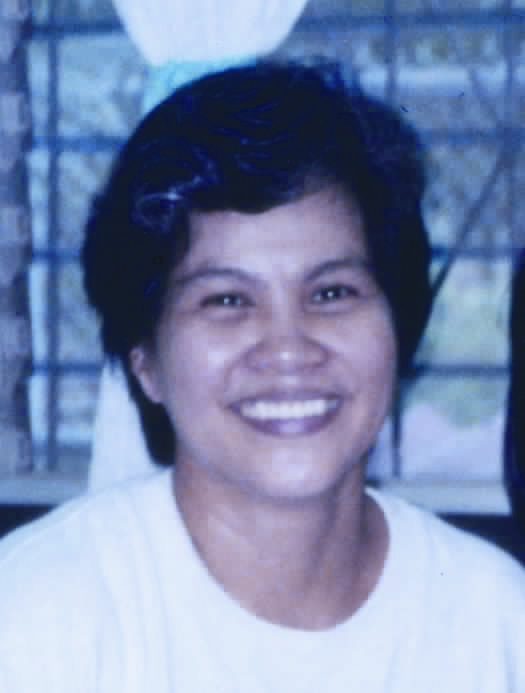
By Ma. Norma L. Plata
The author is a member of Christ the King Association International – Asian Region, popularly known in the Philippines as Ligaya ng Panginoon. She has been a lay missionary in Thailand for six years now. Here she shares with us how she discovered where God was calling her.
In 1983 I experienced a great stirring in my heart to serve the Lord full-time. After three years of discernment, I left my banking career and joined the mission team in Malaybalay, Bukidnon, a few months later. After two years in Mindanao, the Lord led me to a church-based NGO, the National Secretariat for Social Action (NASSA). Then in February 1991, I worked full time for Lingkod ng Panginoon. They were seven years of the most memorable moments of my life.
Guiding vision
In my younger years, becoming a missionary never crossed my mind. As a teenager, going to Mass on Sundays and even during special seasons of the Church was more of an obligation and sometimes a burdensome duty that I had to meet. By the time I reached college, though, I told myself, ‘This is more serious stuff now, I should have a long-term guiding vision for my life from now on.’ After giving it some thought, I decided that I would pursue a stable, successful career after graduation. By that I meant possessing a high position in the corporate world and BIG money. For the first time in my young life, I felt so much in control.
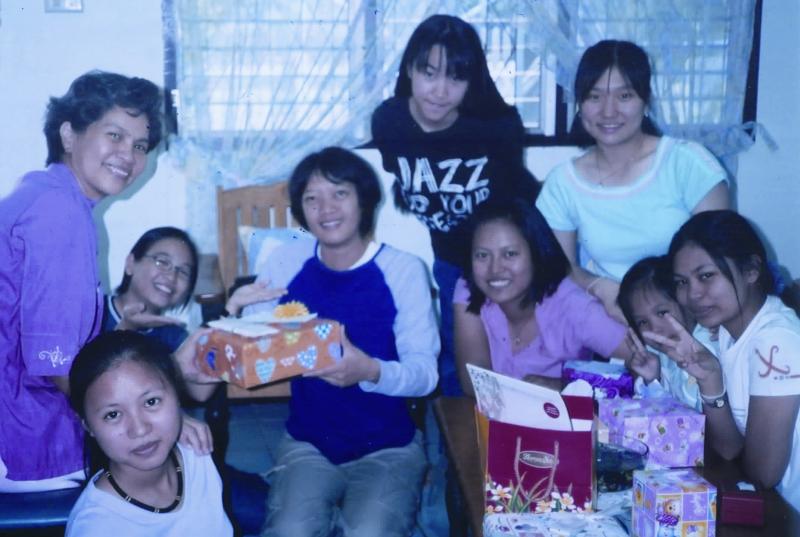
Pain of failure
Until fourth year enrolment came, when I saw all my plans – together with my future – crumble right before my eyes. I wasn’t issued a clearance for enrolment because, for the first time since I entered school, I had failed in a subject. It was one that required very little effort to pass, or so I had convinced myself. Dazed and pained, I pondered upon why things were happening the way they were. In an instant, even aiming for the lowest level of recognition and honors at graduation had become an ‘unreachable star.’
No total control
Slowly but surely, I began to see change taking place at the very core of my being: my priorities and values, my view of God, my whole perspective of the future that lay before me. I realized that my great fear for my future and source of anxiety was the fact that I had wanted so much to be control of my life. Further realizing that the root cause was my lack of faith and trust in God’s unconditional and immeasurable love and perfect wisdom, I began to pray that God increase my faith, to know Him and His love even more personally, so that I might love and trust Him more, and through this, make others know and love Him as well.
The path I chose
The Lord has never failed to respond favorably. In hindsight, this prayer actually opened the way for God to prepare me to respond to His call and make life-changing decisions, as I learned to submit my life more and more fully to Him. By 1997, I was consecrated to live the single life for the Lord permanently. I once again said yes to Him and faced a new turning point: Thailand was to be my next mission field, with Genesis 12, the call of Abraham to go to a foreign land, as the Lord’s personal word for me.
His will, not mine
More than once, my friends and family have commented, ‘Norma, nakakatakot naman ang mga desisyong ginagawa mo (that’s a scary decision you’re making).’ Each time I reflected on their reactions to my decision I came up with the same answer: perhaps if I had not known and experienced God and His love personally, it would certainly have been a daunting step to take. But I had experienced Him as Scripture describes Him and I clung to His promise: ‘I‘I know the plans I have in mind for you, plans for your welfare and not for woe, plans to give you a future full of hope (Jer. 29:11).
I’m glad that after all those plans I set for myself, God’s own plan and will found a place in my heart.
Santacruzan In London
By Sister Mary Moylan SSC
Sister Mary Moylan, who worked before in the London Filipino Chaplaincy, writes about the Euro-Santacruzan, when Filipinos living in Europe walked in procession from Hyde Park to BatterseaPark, London, England, in 1997. Each year the festival is celebrated in a different European city.
One of the most colorful May processions in the Philippines is the Santacruzan. A popular devotion brought by early Spanish missionaries, it is based on the legendary Finding of the Holy Cross in 4th century Jerusalem by Helena, mother of the Emperor Constantine, at the end of a long pilgrimage-search.
The Santacruzan
Today’s Santacruzan procession continues to include Helena, as Santa Elena, and the boy Emperor Constantine, combining the memory of that pilgrimage with the Flores de Mayo, the Philippine devotion honoring Our Lady with floral offerings. She has a special place in Filipino hearts.
The zagalas, beautiful young ladies in magnificent dresses, walk in procession under arches of flowers, accompanied by their escorts dressed in the traditional Barong Tagalog. At the end of the procession, with music and prayer, each zagala offers her garland of flowers to Our Lady.
Santacruzan in London
For several years on the last Sunday of May, London’s East End Filipino community, led by the hard-working Pia Mujer and the organizing committee of the Rosary Crusade, have continued the Santacruzan tradition.
The police escorting the procession through the street traffic compliment the organizers on the good order they achieve. ‘Your demonstrations are always so peaceful. We never have trouble with them. We really like them.’
Filipino migrants working in Europe have celebrated the Euro-Santacruzan festival for many years now in different countries. In 1997, London was chosen as the venue. Visitors came from Italy and Germany, Austria and Switzerland, France, Spain, theNetherlands and Belgium. They were welcomed and hosted by Filipino families in London. Jay Ibot was the overall organizer of the three-day festivities.
A great back-up team included Linda Roxas and her husband Cesar, of Couples for Christ (CFC), and the Filipino chaplaincy in the Archdiocese of Westminster, London. Ester Limot-Limot was behind all the careful preparations for the lovely closing Mass in Battersea Park.
Bring back the Faith
On the Saturday prayer groups across London met for a day of prayer in the basement of Our Lady of Victories Church, Kensington. Fr Albert Alejo, a young Jesuit from Mindanao who is in London studying Cultural Anthropology, spoke on the theme ‘The Spiritual Role of Euro-Filipinos toward the Third Millenium.’ He recalled the words of Pope John Paul II in Maniladuring World Youth Day 1995: ‘The faith was brought by Spanish missionaries to the Philippines 400 years ago. Now it is thePhilippines’ turn to bring back the faith to Europe.’
Spreading the Gospel
There was no mistaking the high level of energy among the participants who shared their experiences of migration and adaptation. They were overjoyed to have their experiences of lived faith confirmed. God was felt to be very present in their lives. Despite all the hard work and homesickness in a foreign country, His Providence is very real. So is the sense of God’s call to mission, and deep gratitude for His blessings. Filipinos in Europe are spreading the gospel by the example of their lives, and as Bishop John Patrick Crowley of Middlesbrough says, ‘By their smiles, their greatest gift to London.’
Mystery of the Cross
Father Albert reminded his mga kababayan that they had come to find a livelihood, not a way of dying. The hard truth is that many overwork – and even die – in the effort to send money home to their families. The costs of migration, the suffering and the pain of loss, have to be acknowledged. Their coming together to celebrate the Santacruzan suggests that the challenge now is to discover in our times the mystery of human suffering, the mystery of the cross.
In the course of the day young British Filipinos met their counterparts from continental Europe for a youth forum and exchange of experiences. The Festival was a time for linking up with friends from many places and for making new ones.
Filipino migrants today are scattered worldwide. We Columbans who worked in Pangasinan were delighted to spot in the procession a banner from Toronto, Canada, honoring Our Lady of Manaoag.
A public religious procession through the streets of London is such a rarity that a British Broadcasting Corporation (BBC) team attracted by the CFC banner of Our Lady wanted to interview them along the route. Clearly, a new sense of God’s call and God’s providence emerged during the festival in the shared experience of being migrants.
As Father Albert said, ‘Not one of you is here in England by accident.’
The Children Of Naleba
By Rowena ‘Weng’ Dato Cuanico
Rowena Dato Cuanico is a Columban Lay Missionary from the Philippines now on her second three-year term in Fiji. She is a frequent contributor to Columban magazines.
In Holy Family Parish, Labasa, I’ve been working particularly in the Indian Apostolate. The children of Naleba, Labasa, whereHoly Cross Church is located, have been a great source of inspiration, joy and hope for me. Most are Indo-Fijians, two of mixed heritage and one an indigenous Fijian. They are mostly children of sugarcane workers whose incomes are seasonal and meager. Their mothers, who stay at home taking care of them, occasionally take jobs as household workers. Mondays to Fridays, the children, with their Muslim and Hindu friends, walk to Naleba Primary School. Some have to walk for an hour and a half or so while the luckier ones are only 15 minutes away. The five luckiest live in town.
Joyful believers
On Sundays, they walk the same distance to Holy Cross Church, the heart of the parish’s Indian Apostolate. One thing that struck me while working in Naleba is that our children always come to church joyfully, with big smiles and hardly any trace of fatigue on their faces.
I remember clearly our first ‘Church Clean-Up.’ The cleaning brigade was an unusual bunch of young and enthusiastic members of our community, three youths and about seven children. For about six hours, with Beth Briones, also a Filipino Columban Lay Missionary, we cleaned the church, planted flowers and cleaned the statue of the Blessed Mother. Taking a break, the youngsters ran around the church compound, playing ‘hide-and-seek’ and other games and. Then I’d see them working again. It seems that work is fun for them and perhaps that’s how it should be. After the clean-up, we shared a meal in the community shed and had so much fun. Since then, the children with their small hands and big hearts are always present at every ‘Church Clean-Up.’
Taking responsibility
But these children don’t just help clean the church compound. They’re so much a part of our community and are our young ‘liturgists.’ The different mandalis (prayer groups) take turns in preparing the Sunday Liturgy. When it is their mandali’s turn to prepare the liturgy, they come to church early. They arrange the flowers, change the linens, select the hymns, distribute the hymn books, and do the ‘welcoming of the priest.’ This includes washing the priest’s hands, then the blessing of the water and putting a garland on the priest. Some do the readings, play the dholak (a kind of an Indian drum) and other musical instruments and sing to their hearts’ content.
A community of children
Each of them has a unique story to tell. Let me tell you some. Emmanuel is one of the youths of our community. He plays thedholak beautifully. When the Nagigi and Khriist Jyoti mandalis were being revived in 2001, Emmanuel would come with Master Mul Deo Sahayam and his wife, Ester, and myself, to play the dholak, allowing us to sing beautiful music to the Lord. His only sister, Jiji, holds the distinction of having put the garland on Fr Diego Cabrera Rojas, a Peruvian Columban priest who served in the Indian Apostolate, more times than any other girl in the community. Emmanuel and his brother Edwin are both altar boys.
Two Mariams
We have two Mariams in the community. One has to walk about thirty minutes to church. Despite the distance, she comes regularly and always helps prepare for the liturgy. She sweeps the church, picks some flowers and arranges them on the altar. Her sister Christine is a very responsible young woman who works very quietly, always with a smile on her face as she makes beautiful garlands. The other Mariam lives next to the church. She’s a very reliable messenger, gladly running errands for me. As she’s my closest neighbor, I always call Mariam when I need help, including rush orders for mallaa or leis.
A voice of inspiration
Sonam put the garland on me during our welcome party. She’s from Nagigi, about nine kilometers from church. Most of the time, she and her family walk to church. She’s quiet and very sweet. I’ve always been touched at the way she prays during themandali. One Sunday, during the Nagigi mandali’s turn to prepare the Mass, she surprised everybody when she did the Second Reading clearly and, perhaps, courageously. All readings and prayers are in Hindi. She’s the youngest member of our community to have ever done so and has been a great source of inspiration for all.
Their part in the mission
Vandana is another lovely girl whose family are very responsible members of our community, taking an active part in the Khriist Jyoti mandali and in other church functions. During the ‘Church Clean-up’ before Holy Week, Vandana, her older sister Lynette, along with Sheryn and Mariam, were in charge of cleaning all brass items, from flower vases to candle holders, a job they did very well.
Joel, his sister Doreen and older brother Michael, have to walk more than an hour to church. They bring roti, a kind of unleavened bread, and some curry, fruit or fish for us. Joel is also an altar boy, very responsible for his age. Once, we were joking with him that perhaps in ten years he’d be a father. He replied quickly, ‘nahiiñ,’ ‘no,’ because he wants to be a priest.
Rex is an ethnic Fijian. He walks for over an hour to come to church with his grandparents. They live in a Fijian village close to Naleba. Whenever we have Fijian ceremonies, we involve Rex.
Then there are Daniel, Paul and Vishal whom I always ask to collect the garbage around the church. They walk in a leisurely manner around the compound, black garbage bags in their hands, collecting plastic, paper, bottles and tins. Paul and Daniel are altar boys who take their duties seriously. We also have Richard, Rahul, Michelle, Archanna, Vinod, Pat, Alvin, Sonil, another Emmanuel, Freddie, Rodney, Dennis, Michelle, Vicki, Ron, Christopher and the pre-school generation of Puuja, Christina and Alfred and the babies, Jay and Samantha. When Christina sees me from their veranda, she calls out, ‘Weng, aao, chhaa pio,’‘Weng, come and drink tea.’ Puuja dances very well. We also have a child who needs special care. Another passed away two years ago.
The future of Naleba
It seems to me that the Church is an important part of the lives of the children of Naleba. I always feel happy when I see them playing and praying together. I love to hear them pray so sincerely during their mandalis. During the school holidays, almost all of them, with their friends who are Hindus, Muslims or from other Christian churches, neighbors and classmates attend theColonias, a summer camp for children, started by Claudia and Nancy, Columban lay missionaries from Chile who were here some years ago.
And yes, praying with them can be an enjoyable and, surprisingly, funny experience. I remember how we prayed the Stations of the Cross in church on the Friday of the Fourth Week of Lent. About three adults and 15 children and youths came. While we were praying, I could hear bursts of laughter from the children when the prayer leader would forget a line. It was the most ‘enjoyable,’ if there can be such, Stations of the Cross I ever had.
The children of Naleba are also my language teachers. Learning with them can be enjoyable because they love to laugh whenever I mispronounce or misread a word.
These are the children of Naleba, the future of the Indo-Fijian Catholic community. These say a lot to me when I see them in a church clean-up, helping their mandali set the altar and the whole church for Holy Mass on Sunday mornings, and singing hymns perhaps the way angels do with so much innocence and joy. The children of Naleba give me and the community much joy, hope, life and happiness, perhaps because they feel part of the community. Or perhaps because our community, especially their parents, is acknowledging their presence and the contribution they make to every one of us.
Today,I can see the children of Naleba learning how to set the altar for Mass, how to prepare the water for the Washing of the Feet, and how to clean the Church. Someday in the future, they might be leading a mandali or serve as lay missionaries in another country. They’ve planted trees with Father Diego around the church compound. Hopefully, one day, just like Father Diego, they’ll be planting the Word of God in the hearts of people as Columban priests, sisters or lay missionaries. Today, we give them support and encouragement. Someday, they too will be bearers of hope and life to others. These children of Naleba, with their joyful and bubbly spirits, their loving and generous hearts, their sweet smiling faces - I thank God for them.
What Is A Marriage Encounter?
Worldwide Marriage Encounter offers a weekend experience designed to give married couples the opportunity to learn a technique of loving communication that they can use for the rest of their lives. It's a chance to look deeply into their relationship with each other and with God. It's a time to share their feelings, hopes and dreams with each other.
The emphasis of the Marriage Encounter weekend is on the communication between husbands and wives. The weekend provides a conducive environment for couples to spend time together, away from the distractions and tensions of everyday life, while encouraging them to focus on each other and their relationship.
It's not a retreat, marriage clinic, group sensitivity, or a substitute for counseling. It's a unique approach aimed at revitalizing Marriage.
This is a time for you and your spouse to be alone together, to rediscover each other and together focus on your relationship for an entire weekend. Every marriage deserves that kind of attention!
For more information about WME in the Philippines, you may contact Gerry and Mila de Jesus at gdejesus@edsamail.com.ph.
Your Turn

Dear Fr Seán Coyle,
Good day and peace! My name is Anne Concepcion G. Pozon from St Scholastica’s College, Manila. The stories in Misyon made me reflect on and understand the difficulties in my life. In the September-October 2004 issue, I was particularly touched by the story of Blessed Gianna Beretta Molla, the mother who risked her life for the sake of her baby.
I felt a connection of that story to my life. When I was five months old, according to the stories I’ve heard from my parents, I nearly died. They said that I had meningitis, which nearly took my life. My mom and dad were really on the verge of despair. The doctor said that I might never wake up.
But my parents didn’t give up, especially my mother. With strong faith in God, she and her sister went to different churches praying for my health.
My mother offered God her life in exchange for mine. She then asked God for a sign if I would live, the sign to be that someone would give her flowers.
My Tita also did the same while praying to God for my recovery. She promised that she would make me a religious and faithful person.
On my mom’s way back to the hospital, someone did give her a flower. She was really excited and so she rushed to the hospital to tell the doctor about this miracle.
‘My daughter will live,’ she said. But the doctor didn’t believe her. The doctor explained that I was really in a crucial state and had no chance of living. But miraculously, the next day, I began slowly to feel fine. The doctors of course were astonished at this. And after one week, I was released from the hospital, already healed.
So I survived. I’m currently living in this paradise. My Tita fulfilled her promise. She brought me to all of those churches. Also, she gave me a little Sto Niño she bought in Cebu. My mom also did her part; she made me visit Baclaran church every Wednesday. I did become a religious and faithful person. And I’m happy because of it.
A million thanks to all of the Misyon staff. Misyon really enlightens me!
Anne Pozon
‘PNG Baptism’
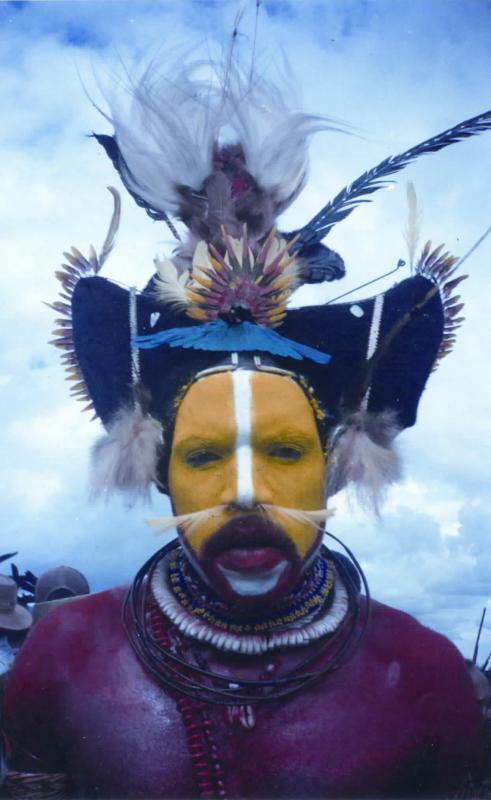
By Father Francis Vega
Twenty-eight years ago Father Francis Vega arrived in Papua New Guinea with Father Nestor Ubalde.They were the first Filipino SVD priests to be assigned there. Father Francis now works in Hilongos, Leyte. Here he shares with us his experiences during his first year in PNG.
I arrived in PNG with Father Nes on 6 September 1977. We were sent to the highlands to learn thelingua franca of the country, Pidgin. We were provided with a Pidgin book and a language tape. Then we were left to ourselves to read the book and to listen to the tape. After six weeks of language study, Father Nes was assigned to the coastal Diocese of Madang and I to the Diocese of Goroka in the highlands.
MY FIRST ASSIGNMENT
The Bishop of Goroka gave me my first assignment as the assistant priest of Neragaima parish. Before giving me the faculty to hear confessions, he made sure that I had enough knowledge of Pidgin. How beautiful are the mountains there! The people just couldn’t understand why I kept gazing at their beautiful majesty.
FIGHTING TRIBES
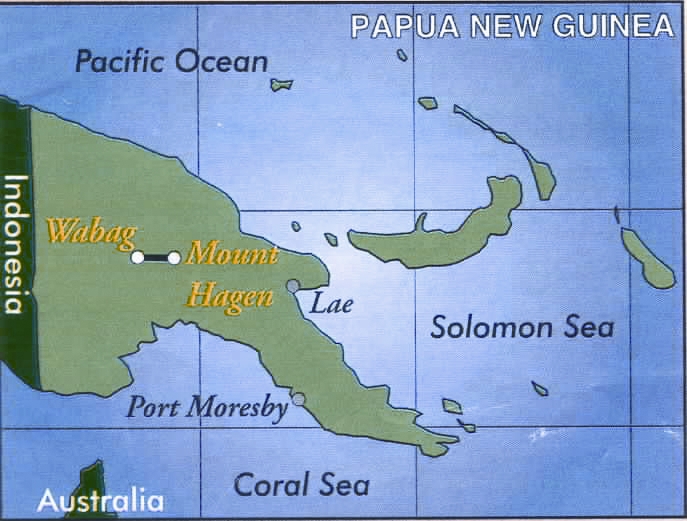
At that time, there was tribal fighting in most of the parishes in the highlands. The common reasons for fighting were: land grabbing, abducting of women, pigs destroying gardens of the enemy. No guns for the warriors, only bows and arrows, axes, wooden shields and bolos. They would burn down houses (usually made of bush materials) of their enemies. They would uproot root crops and cut down coffee trees. Fortunately, we missionaries were not included in their skirmishes. Thank God!
Once I was coming home with two young men. They pointed out to me a small group of men on a mountain ridge, with their backs toward us. ‘If you weren’t with us, Father, most probably we would be dead by now,’ they told me. ‘Those men are just pretending they haven’t seen us.’
FAITH AMIDST CONFLICT
A predecessor told me this story. He went to a village for Mass, only to find out that the people were engaged in warfare. He told them that he wouldn’t say Mass anymore. But the tribe leaders told him: ‘Father, let us have the Mass. First we go to confession. After Mass, we will continue with the fighting.’
DISTINCT ROLES
In PNG the men and women accept their distinct roles. The women do the gardening, gather firewood and food supplies. While doing all this, they carry their babies on their backs. On the other hand, the men would only be carrying their bows and arrows, always ready to protect their families in times of danger.
The men would stay in one place and their womenfolk would bring them food. The reason for this was practical; it would be easier for the men to gather in case there was a sudden raid by the enemy.
LANGUAGES
In spite of the relatively small population of Papua New Guinea, there are about 900 languages. A parish in the highlands would usually have at least four major languages plus minor ones. A priest usually had with him a catechist-interpreter at Mass. The priest would give a ten-minute homily and the catechist would do the interpreting for half an hour.
ON THE ROAD
The parish priests were practically the only ones with cars. There’s one main road running through each province. The feeder-roads were much worse than the 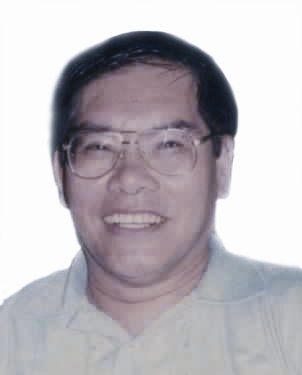
On two occasions I had to bring a pregnant woman to the hospital. I was nervous. I didn’t know what to do to help ease the mother’s labor pains and much less what to do if she were to give birth in the car. And, indeed, both mothers gave birth in my small Suzuki!
It was very rare for a new missionary not to get malaria in PNG, for there are lots of mosquitoes there! Perhaps we could call this the ‘PNG baptism’. Each time I came home to the Philippines during my more than 20 years in PNG I still wanted to go back there. Yes, I did. I’m not saying this in malarial delirium!
